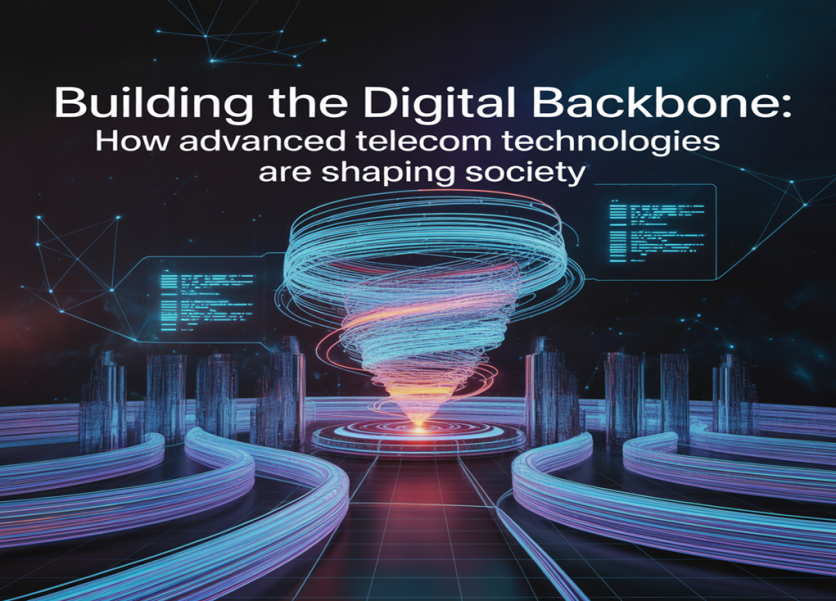
In today's world, Venu Madhav Nadella, an expert in telecommunications systems, explores the critical role of advanced telecom technologies in today's digitally dependent world. With deep insights into the field, his work underscores how innovations in telecom are not only enhancing connectivity but transforming core societal functions.
Ensuring Continuity with Service Assurance
Modern Service Assurance (SA) is no longer about merely detecting faults—it's about anticipating and mitigating them before they occur. Leveraging machine learning, SA systems now predict potential service degradations and optimize network performance through automated decision-making. The adoption of Zero-touch Network and Service Management (ZSM) frameworks takes this a step further by enabling autonomous, end-to-end service orchestration, drastically reducing the need for human intervention. These technologies collectively maintain high service availability across vast, complex telecom infrastructures.
Eyes on the Network: Real-Time Monitoring in Action
Real-time Monitoring Systems have become the vigilant eyes of the network, constantly analyzing telemetry across the OSI layers using edge computing and AIOps principles. By deploying distributed probes and time-series databases, these systems detect anomalies almost instantaneously. Hardware acceleration, like deep packet inspection, ensures swift data interpretation, while machine learning models uncover patterns invisible to traditional rule-based systems. This capability is especially crucial for applications requiring split-second responsiveness, from emergency services to smart grids.
From Data to Insight: Operational Intelligence as the Brain
Operational Intelligence (OI) functions as the analytical core of telecom networks. OI platforms utilize stream processing, federated learning, and graph-based analytics to process massive datasets, transforming raw input into actionable insights. Whether it's predicting peak usage in education or monitoring patient vitals in healthcare, OI ensures data-driven decision-making at scale. This proactive intelligence enables networks to self-optimize and respond dynamically to evolving conditions, enhancing both reliability and performance.
Education Reimagined Through Telecom Innovation
In education, integrated telecom technologies deliver robust digital learning environments. SA systems monitor video-streaming quality, rerouting traffic to maintain performance. Real-time monitoring prioritizes learning data, reducing delays during congestion. Meanwhile, OI anticipates demand spikes during exams or registration periods, allowing for preemptive scaling of resources. These advances create scalable, reliable, and personalized virtual classrooms, helping institutions meet modern educational demands.
Modern Policing Powered by Predictive Infrastructure
Telecommunications innovations are revolutionizing law enforcement. SA frameworks ensure emergency networks remain uninterrupted, even during outages. Real-time monitoring integrates 911 data, surveillance, and officer GPS into unified dashboards, offering real-time situational awareness. OI enhances this ecosystem by identifying anomalies and enabling predictive policing models that preemptively allocate patrols. These systems provide a high-reliability infrastructure critical for maintaining public safety and rapid response.
Healthcare's Digital Lifeline
In healthcare, the stakes are high—and telecom rises to the challenge. SA systems provide encrypted, regulation-compliant transmissions for sensitive data. Real-time monitoring accommodates specialized needs of medical IoT devices, from insulin pumps to heart monitors, ensuring reliable communication under strict latency requirements. OI tools utilize natural language processing and computer vision to support diagnoses and power secure telemedicine platforms, preserving clinical integrity even under variable bandwidth conditions.
Smarter Governance Through Connected Systems
Government services benefit from telecom's versatility, from digital twins that simulate infrastructure to real-time urban sensor networks. SA frameworks enforce zero-trust architectures, guarding against cyber threats. Real-time monitoring facilitates city-wide responsiveness—adjusting traffic signals or redirecting water flow based on real-time data. OI enables these systems to evolve into self-regulating entities, supporting governance that is both efficient and adaptive.
Innovating Beyond the Horizon
Despite their achievements, telecom systems face ongoing challenges. Interoperability across legacy and proprietary systems, scalability amidst explosive device growth, and the need for robust security remain significant. To address this, emerging innovations are reshaping the landscape. Network slicing enables tailored services across shared infrastructure. AI-driven networks introduce autonomy and adaptability. Quantum-secured communications promise future-proof encryption. Integrated sensing technologies combine environmental awareness with connectivity, redefining what networks can perceive and respond to.
In conclusion, as explored by Venu Madhav Nadella, telecom technologies have evolved into the foundational nervous system of modern society. Their ability to intelligently connect, monitor, and analyze has made them indispensable across education, healthcare, safety, and governance. With continuous innovation, these systems are not just supporting society—they are helping shape its future trajectory, ensuring resilience, equity, and progress in a digital-first world.
ⓒ 2025 TECHTIMES.com All rights reserved. Do not reproduce without permission.




